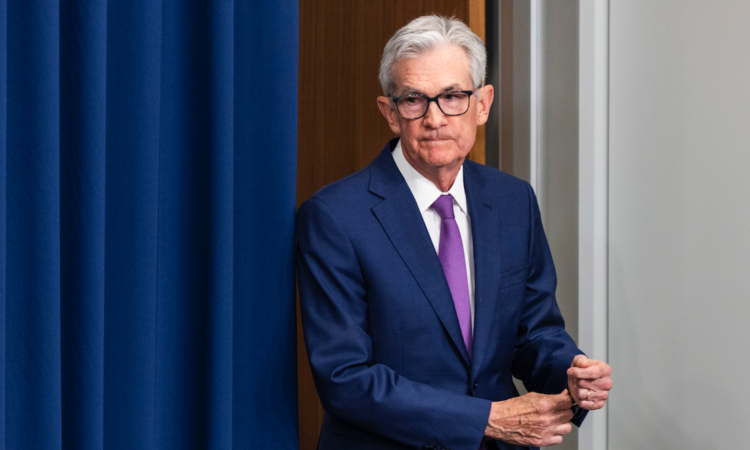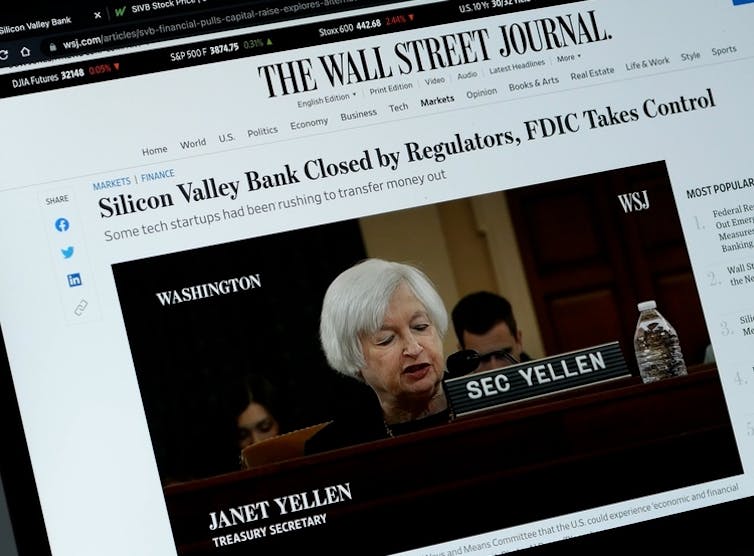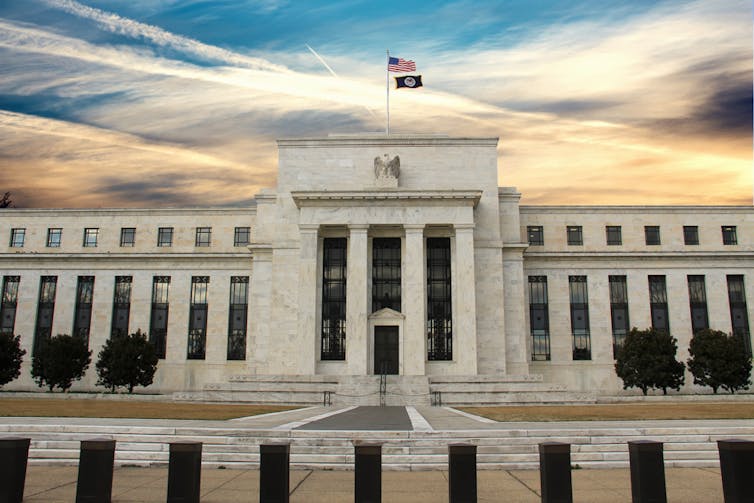
March 2024 is making investors nervous. A major scheme to prop up the US banking system is ending, while a second may be winding down. Some economic commentators fear another banking crisis. So how worried should we be?
The red letter day is March 11, when US central bank the Federal Reserve will end the bank term funding program (BTFP), a year after it began in response to the failures of regional banks Signature, Silvergate and Silicon Valley. These banks were brought down by customers withdrawing deposits en masse, both because many were tech or crypto businesses that needed money to cover losses, and because there were better savings rates available elsewhere.
This damaged the banks’ profitability at a time when raised interest rates had already weakened their balance sheets by reducing the value of their holdings in government bonds. Silvergate failed first but Silicon Valley Bank’s collapse on March 10 was particularly memorable. It triggered a bank run by announcing it needed to raise capital after being forced to sell bonds at a loss.

Domenico Fornas
There soon followed the failures of Signature and also Swiss bank Credit Suisse, which had to be taken over by neighbouring giant UBS. There had been longstanding problems at Credit Suisse, but heightened anxieties on the back of the US upheaval delivered the final blow.
How the BTFP works
Investors then feared that other banks would fail. Most US banks were similarly exposed to customer withdrawals and underwater bond portfolios, while the Credit Suisse collapse demonstrated the potential for contagion. The Fed’s BTFP stopped the panic by allowing US banks to borrow from the central bank using their bonds as collateral.
Not only did this let them quietly access more funding, the scheme also priced the bonds at their original face value and not market value. This effectively negated the interest rate rises and reinflated banks’ balance sheets. Only one more bank, San Francisco’s First Republic Bank, has since gone under.
So what will happen as the BTFP closes? I suspect it won’t lead to more bank collapses. Banks have had another year to adjust to higher interest rates, plus they can still borrow from the Fed through another facility called the discount window.
Nonetheless, the BTFP’s closure is likely to increase banks’ borrowing costs, meaning their profit margins will fall. They might react with higher lending rates or by making less credit available to customers, potentially weakening the economy. This could combine with a second foreseeable change to create new dangers for the sector.
Quantitative tightening
That second change relates to the quantitative easing (QE) programme by the Fed and other central banks, which broadly dates from the global financial crisis of 2007-09. It saw central banks essentially creating new money and using it to buy government bonds and other financial assets. They added more reserves to high-street banks as part of this process, enabling these institutions to lend more money as a result.
The most recent leg of QE began in March 2020 in response to the pandemic, then ended in 2022, when central banks began a reverse programme called quantitative tightening (QT). This involves selling bonds and other assets and removing the proceeds from the financial system.
It should be a drag on the economy, yet the effects have been tempered by a facility known as the overnight reverse repurchase agreement or “overnight reverse repo”. This essentially enables financial institutions to deposit their excess cash overnight with their central bank in exchange for government bonds. They earn extra money at very low risk, injecting more liquidity into the system.
The facility was extremely popular during the period of QE and ultra-low interest rates because these injected so much cash into the system. Its use has been falling since late 2022, since central banks have fewer bonds to lend while institutions have less money to park overnight.

MDart10
Daily balances at the Fed’s overnight reverse repo have fallen from over US$2.2 trillion (£1.7 trillion) in mid-2023 to below US$600 billion in January. However, while the positive balance continues, it offsets the need for the Fed to remove bank reserves as part of QT, since the bonds flowing out under that scheme are being partially replaced by bonds flowing in through the overnight reverse repo.
Only when the reverse repo balance reaches very low levels will the system feel the full effect of QT. At this stage, the Fed has indicated it will slow and then end that programme.
Nonetheless, the transition could be bumpy, with banks potentially raising lending rates and becoming less willing to lend. Many analysts expect the buffer to disappear in 2024, with a range of predictions from late in the year to as soon as March.
Risky times
Heightened interest rates have already led to the most stringent credit standards and weakest loan demand from consumers and businesses in a long time in the US. Meanwhile, banks are dealing with other major challenges such as the plunge in demand for office space as a result of home working. This has brought the medium-sized New York Community Bank to the brink in recent weeks, for instance.
The closure of the BTFP and the end of the reverse repo buffer, particularly if they coincide, could clearly make banks even more risk averse and profit-hungry. The danger is that this all damages the economy to the point that bad debts pile up and we hit another 2008-style liquidity crisis where banks become wary of lending to one another and the weaker ones become unviable.
The recent geopolitical tensions are an additional danger. If cross-border credit and investments dried up, it might further increase the risks of bad debts and could again hit bond prices, further reducing the value of banks’ assets and making their borrowing more expensive.
The Fed and other central banks need to be alert to these rising risks and get ready to end QT in the near future. The end of the BTFP is unlikely to put banks out of business, but it could be one of a series of blows that kicks off a new crisis in the months ahead.





